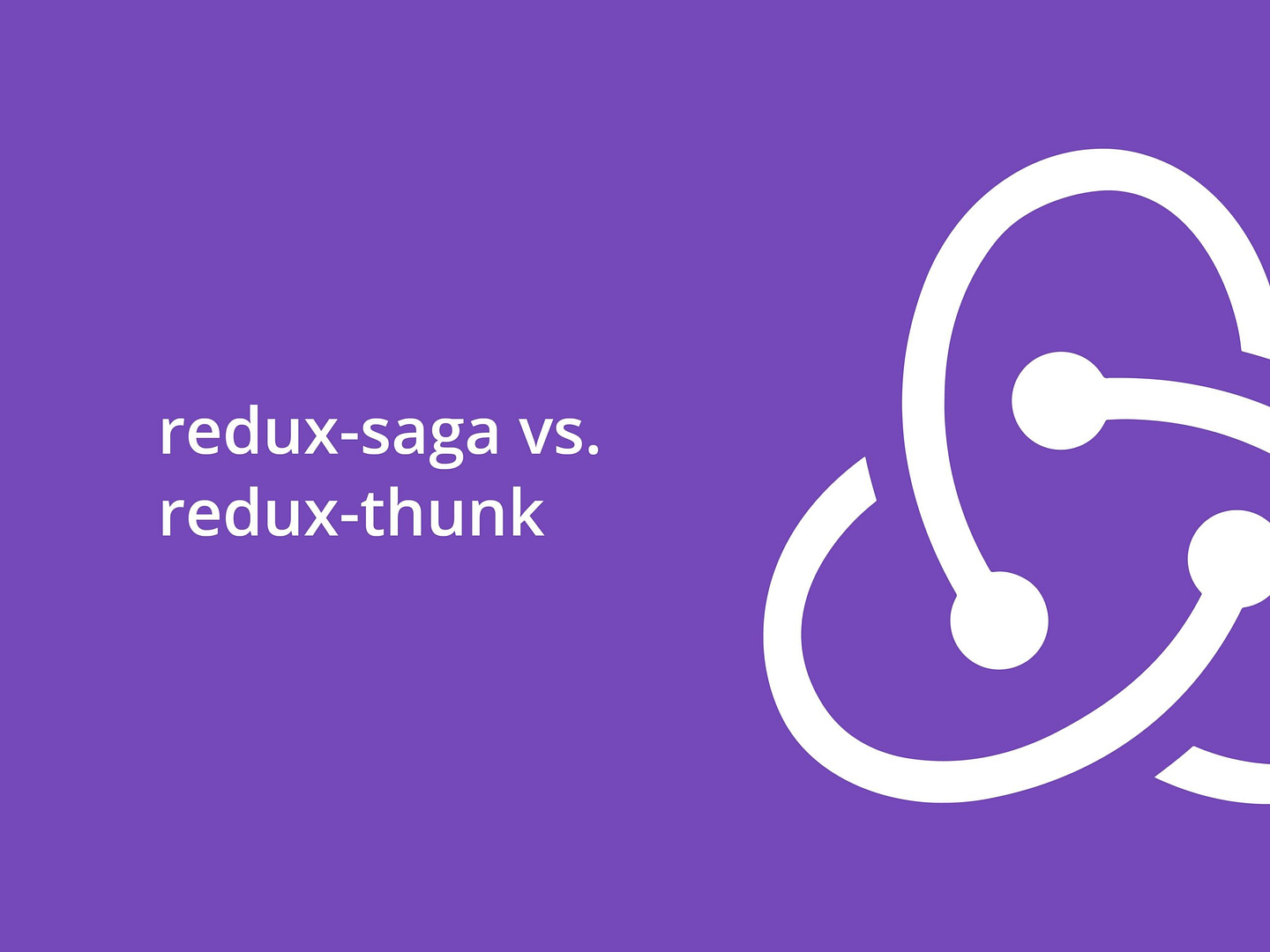
Blog Articles
Redux Thunk vs Saga: Choosing the Best Middleware
Table of Contents
What is Redux?
One of the top trending current standalone JavaScript libraries is Redux, which allows for state management and is usually used in conjunction with React. It tends to centralize the application state inside one immutable store. The setup, with actions being carried out, means that some state will definitely be impacted, and reducers then process the steps taken to affect this state in order to render the flow predictable and maintainable. With this, when using React/Redux, the this reference becomes relevant within the component. These React components connect to the Redux store through the ability to connect from the react-redux library: a given component connects to the state of the store and dispatches actions. Connected React components are the ones assigned with the this keyword of the respective component instance. It simplifies state management in complex applications and proves to be an incredibly scalable and maintainable solution.
This article is going to cover the same topic with a good level of detail and lay out, comparing possibilities and strong use cases of both Redux-Saga and Redux-Thunk in letting through different approaches to the management of side effects within a Redux application.
Understanding Asynchronous Actions with Redux Thunk and Saga
But before that, let’s understand the notion of actions that are asynchronous. As described, these are exactly the kind of actions that include the loading of an API call, processing of a user action, or some other necessary task that takes some uncertain amount of time to be completed. Well, here, in simple reducers and actions proper Redux, very often you deal with synchronous logic in fact. But when it goes down to asynchronous logic, it’s a very different story since you definitely need Redux middleware, like Redux Saga and Redux Thunk.
Redux Thunk
The second type of action creator is called a thunk; it returns a function instead of an action object. The thunk is a simple JavaScript function that can take action over the use of dispatch and getState of the store. This makes Redux Thunk a really simple and easy approach to battling the side effects based on actions.

// Example of a Redux Thunk action creator
|
1 2 3 4 5 6 7 8 9 10 11 12 13 14 |
const fetchData = () => { return (dispatch, getState) => { // Perform asynchronous operation (e.g., API call) api.fetchData() .then(data => { // Dispatch the success action dispatch({ type: 'FETCH_SUCCESS', payload: data }); }) .catch(error => { // Dispatch the error action dispatch({ type: 'FETCH_ERROR', payload: error }); }); }; }; |
Redux Saga
Thunks are taken to completely another level by redux-saga, which sports the outrageous power of ES6 generators. It introduces a new concept called a saga, which is just a separate thread of execution that waits for an action to come by and can run some pretty complex asynchronous logic on its own, apart from the main flow of your application. Advanced use cases, such as race conditions, debouncing, and cancellation, are probably a little bit esoteric for TaskQueue, which Redux-Saga tries to address.

// Example of a Redux Saga
|
1 2 3 4 5 6 7 8 9 10 11 12 13 |
function* fetchDataSaga() { try { const data = yield call(api.fetchData); yield put({ type: 'FETCH_SUCCESS', payload: data }); } catch (error) { yield put({ type: 'FETCH_ERROR', payload: error }); } } // Watcher Saga function* watchFetchData() { yield takeEvery('FETCH_REQUEST', fetchDataSaga); } |
Redux Saga vs Redux Thunk

In front-end development, with the changing needs and new ways of development, daily a developer has to deal with managing state complexity of some complex applications. One of the popular solutions has been Redux. It mostly speaks of handling state management in any pretty complex React app. In this growing ecosystem of Redux, two exotic middleware libraries splendidly expose themselves. This article is going to cover the same topic with a good level of detail and lay out, comparing possibilities and strong use cases of both Redux-Saga and Redux-Thunk in letting through different approaches to the management of side effects within a Redux application.
Complexity and Learning Curve
In this case, simplicity is on the lower grade, the learning curve is at a lower grade, and thus friendlier to developers who want to start on asynchronous actions.
Redux Saga does comply with structural control and the idea of generators and the use of Sagas. Combine, on the other hand, with complex situations that give away for more structured and instrumental interventions.
Control Flow
This is where the power of function composition possible by JavaScript comes into play with Redux Thunk—very complex asynchronous operations can be done yet will still result in clean, lightweight, and readable code.
A generator from Redux-Saga creates a more linear and readable control flow for any complex asynchronous logic.
Testing
Testing Redux Thunk is straightforward, as it involves testing the returned functions. Redux Thunk testing is simple because it only requires testing the functions that are returned. Since Redux Saga testing is done by writing tests for generator functions, it can be much more in-depth; however, libraries such as `redux-saga-test-plan} provide more straightforward testing.
Use Cases
Redux Thunk is suitable for simpler applications with straightforward asynchronous logic. Redux Saga shines the most when applied to very complex applications with very advanced requirements for handling asynchronous operations in order to, for instance, implement coordination among tasks and control long-running processes.
Conclusion
The choice between Redux Saga and Redux Thunk is very much based on your application. Therefore, if one is really interested in simpler sorts of asynchronous actions, the most sober and simple choice would be Redux Thunk. So again, in complex asynchronous workflows, think more about the power and structured way that Redux Saga brings. Think about how complex your application is and how steep of a learning curve your team can handle. Last but not least, two more important libraries are part of the Redux ecosystem and have their strong advantages for different cases.

Get a Fast Estimate on Your Software Development Project
We are committed to delivering high-quality IT solutions tailored to meet the unique needs of our clients. As part of our commitment to transparency and excellence, we provide detailed project estimations to help our clients understand the scope, timeline, and budget associated with their IT initiatives.



